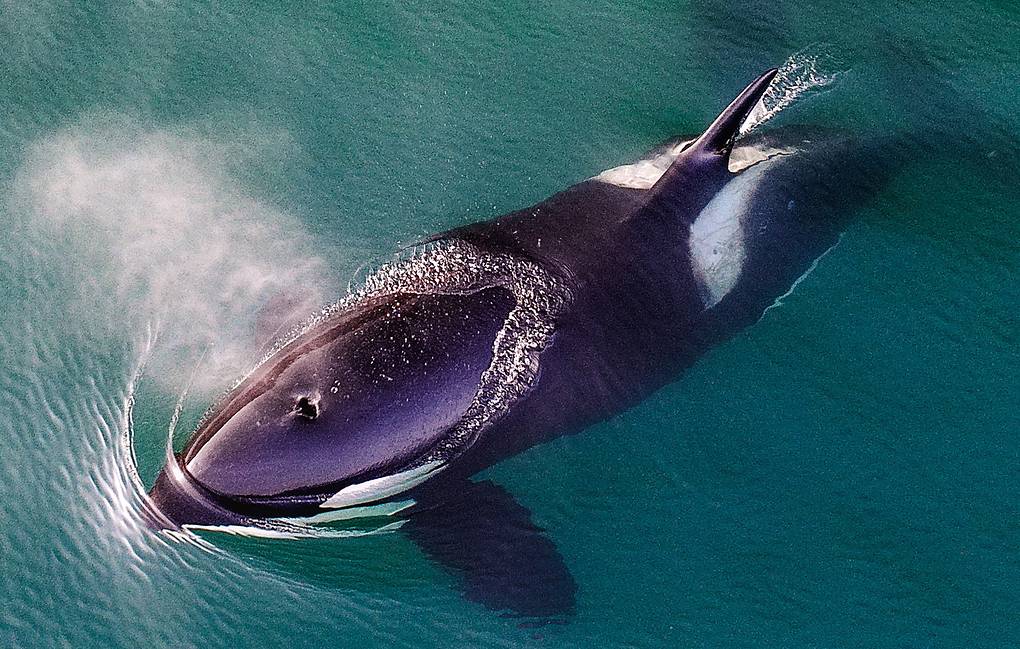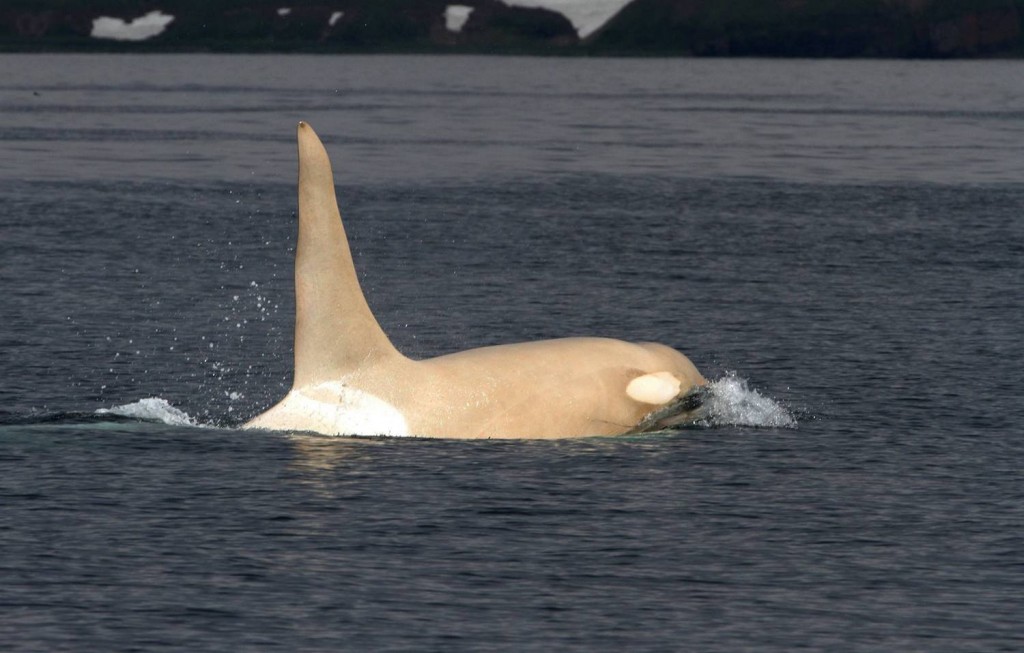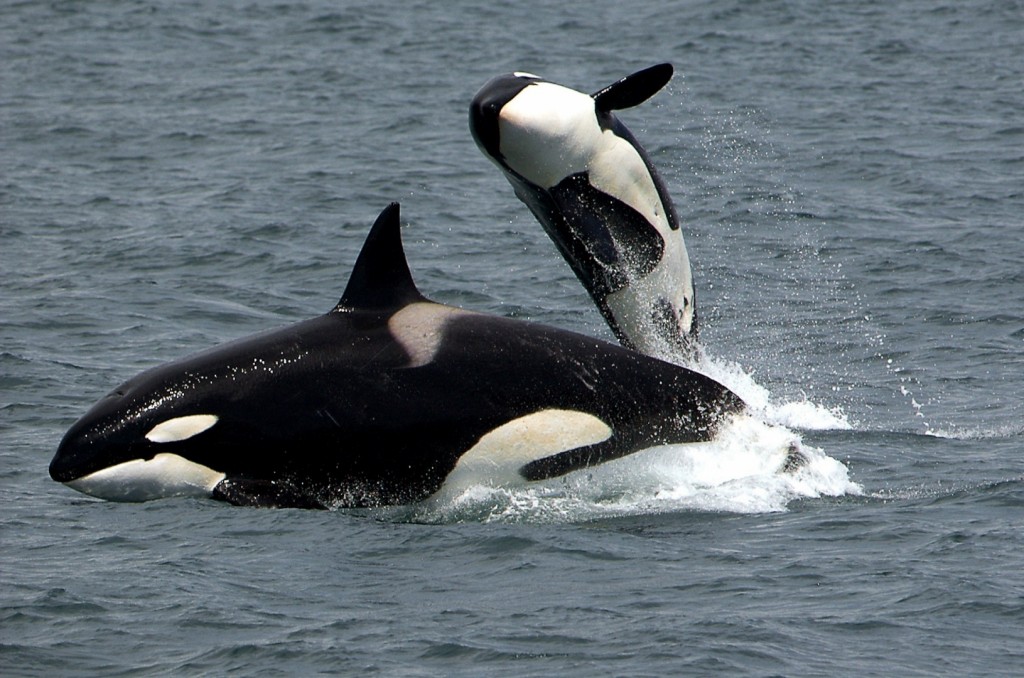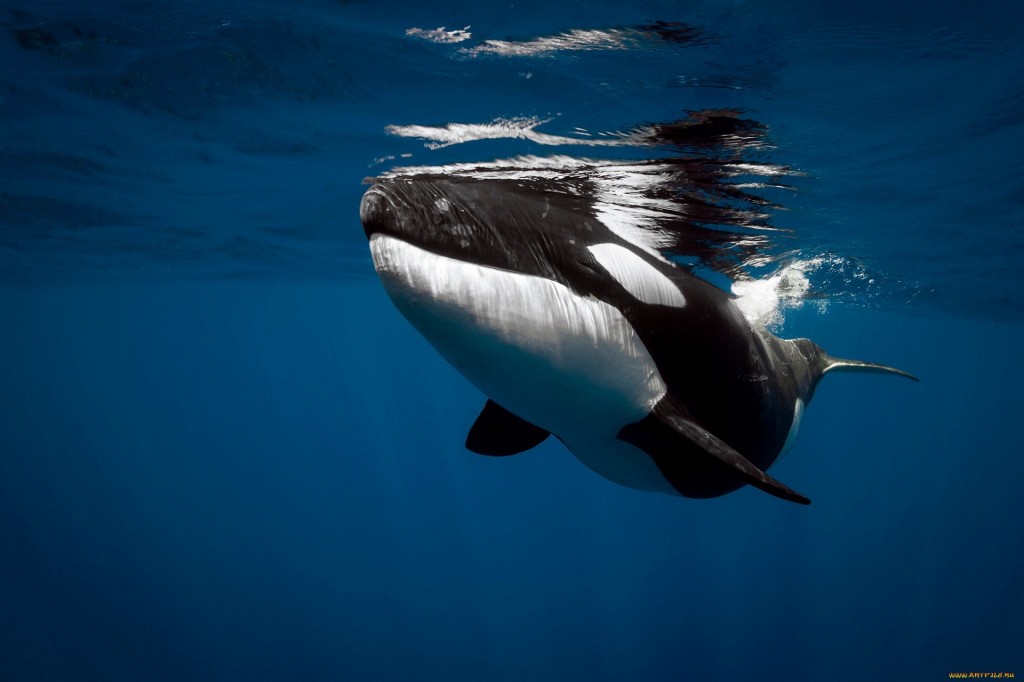February 25, 2020
Orcas-animal record holders
Orcas are the largest members of the Dolphin family. It's hard to believe that killer whales, which can reach a length of 6-8 meters and weigh up to ten tons, belong to the same family as the gray dolphins we know from childhood, but this is true.

Having such an impressive size, it is logical that the next record of killer whales is the amount of food they need to survive, and this is 225 kg per day, that is, 1 ton of 575 kg per week, about seven tons of food per month. It is not surprising that having such high demands, orcas formed as excellent predators, and these are predators of the first order. That is, no one in the wild does not hunt them. Orcas can even hunt sharks and whales.
Food preferences determine the sociobiological characteristics of populations. Killer whales that hunt fish are called "resident" and show effective interaction, a built strategy, surrounding flocks of fish in large family groups. Other populations that live in the coastal waters of the North-Eastern Pacific ocean are called "transits". Their diet consists almost of marine mammals, mainly pinnipeds. Usually individuals of such populations travel in small groups, from two to six representatives.
Due to the fact that orcas often hunt in packs, they are called sea wolves. And we move on to the fifth record: orcas are one of the fastest mammals on the planet. They can reach speeds of 35 to 55 km / h, which of course helps them a lot in hunting.

The sixth record of the species is widespread. Killer whales are the second most common mammal species on Earth after humans. They live in all oceans and most seas. From the equator to the poles in different temperature waters. In Russia, these mammals are widely distributed in the waters of the Kuril range and the commander Islands.
Depending on the habitat, the color of individuals varies. Did you know that each individual has its own unique pattern and shape of spots? Thus, most individuals have black backs and sides, and a white longitudinal stripe on the belly. In the North of the Pacific ocean, there are completely black (melanists) and white (albinos) individuals.

Killer whales are very smart animals. The killer whale's brain is the second largest among mammals on our planet! And this is a record again. According to the latest scientific data from cognitive ethology and zoopsychology, they not only have a "vocabulary" of up to 14,000 audio signals that allows them to communicate with each other, but also transmit a social skill in the group from generation to generation.
Interesting fact: each group of killer whales has its own dialect,
In addition, animals have self-awareness," social consciousness " (social cognition) and emotional empathy, a willingness to help newborns and sick individuals from their group. Often orcas form matriarchal groups (families), the Group usually consists of a female with cubs of different ages and adult sons. Also, a group can be formed by several families, headed by relatives (daughters, sisters, cousins, rarely brothers).

The killer whale reaches sexual maturity at 15 years of age, and males look for a mate at the age of 20. Females give offspring about once every five years, usually bringing 1 cub, pregnancy lasts 17 months. One individual brings 5-6 cubs in its lifetime. In the wild, males usually live less than females, approximately 30 years, and the lifespan of females can reach 60-70 years.
And our latest record: orcas are the most human-friendly predatory animals. Orcas often swim up to ships, exposing their snouts above the water, as if looking around. Being in captivity, they very quickly get used to the person, easily give in to training. This makes it even more difficult to realize that the main reason for the decline in the killer whale population is human exposure. The direct impact of poaching in the catch and indirect. Indirect impact is the destruction of the mammal's habitat: pollution, fishing, noise. There are no exact data on the total population. The minimum total number is estimated at 50 thousand individuals.
Commercial production of these mammals was banned in 1982 by the introduction of a moratorium. However, it does not apply to the whaling of indigenous peoples or to the capture of killer whales for scientific and educational purposes.
Orcas are included in the list of the red book of international significance and are considered an endangered species.

In 2018, predatory orcas were added to the New edition of the red book of the Kamchatka territory. Animal rights activists expect that due to the new status of cetaceans, the number of poaching attempts to catch them for sale in the Dolphinarium will decrease.
In February 2019, Russian President Vladimir Putin instructed to develop amendments that will clarify the rules for trapping animals. After that, Rosrybolovstvo excluded killer whales from the list of the total allowable catch of aquatic bioresources for 2020.
No one knows what awaits orcas in the future, but to protect them, you need to learn as much as possible and tell others about these beautiful animals.
Author: Natalia Staykova
Read more
July 31, 2024
April 12, 2024
April 5, 2024